With 1 billion active users, it's clear that Instagram needs to be an integral part of every business's marketing strategy. Regardless if you're in B2B or B2C, selling a product or a service, it's not wrong to assume that your customers are on Instagram too.
The Good News?
According to surveys, Instagram users are not only there to connect with their friends, but they also LOVE interacting with brands as well. An impressive 90% of Instagrammers follow brands on the platform.
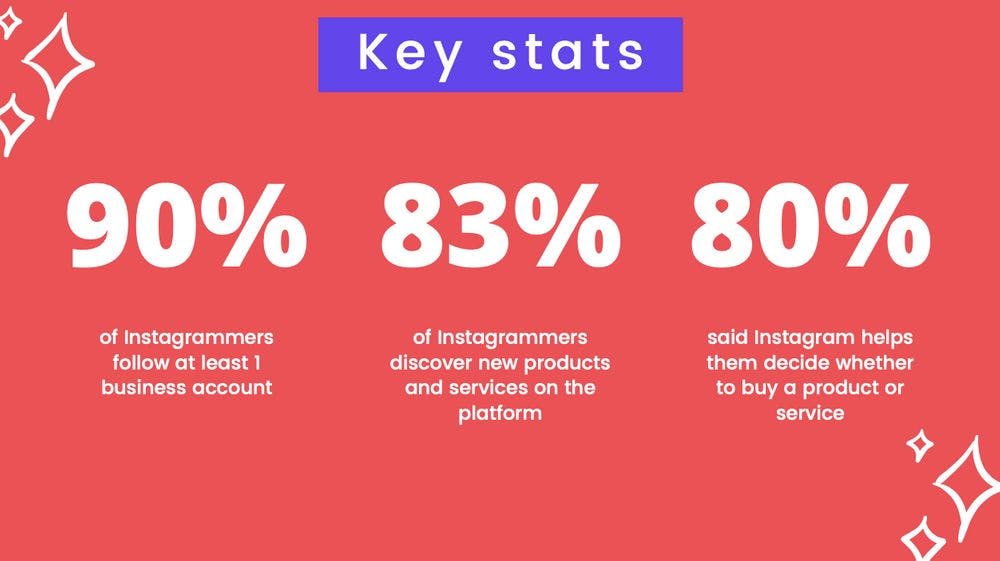
What makes Instagram such a popular platform is the sheer amount of creative freedom available to brands.
How to Use Instagram in 2020?
How you use Instagram for your business it all depends on your "why".
Before you deep dive into the strategy, think of "why" do you want to be on Instagram in the first place:
- Do you want more leads for your business?
- Do you want to build brand awareness?
- Do you want to improve your customer experience?
If you answered "yes" to any of the above, you're ready to hop on to the strategy.
5 Steps for an Effective Instagram Strategy in 2020
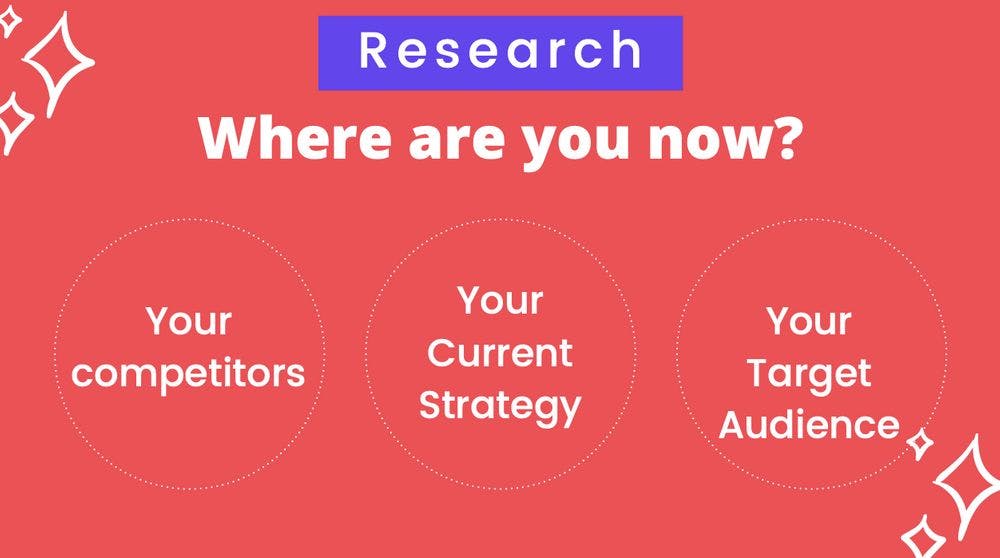
Step 1 - Market Research
The first thing you need to do is market research. This will help you plan a more effective Instagram strategy. And thanks to Instagram analytics tools, all the information needed is easy to find. Everything you need to know about your industry, your competitors and your audience is already out in the open.
Your Target Audience
Have a clear understanding of who you are targeting. Then niche down until you have created a marketing persona.
- What age group are they?
- Where do they live?
- What's their income level?
- What brands do they follow?
- What are their interests, etc.
Your Main Competitors
Identify your top 3 competitors and see what they’re doing well, and what you think you could do better:
- What's their engagement rate like?
- How often do they post?
- What type of content is getting them the most engagement?
- What call-to-action are they using?
Your Instagram Account
If you've been using Instagram for a while, then you can do a quick audit of your past performance. This step will help you understand your strengths & weaknesses so you can plan a new and improved strategy in the future.
- What are your top-performing posts
- Most engaging posts?
- Best reach?
- Highest impressions?
Find out what these posts have in common and keep that in mind when writing your strategic plan.
Step 2 - Define Your Instagram Marketing Goals
By setting goals before you begin, it’s easier to measure your Instagram marketing success of failure. These goals aren’t always focused on money or return on investment, and they shouldn’t be. Instagram is a platform of engagement and providing solutions to problems should be your goal rather than selling.
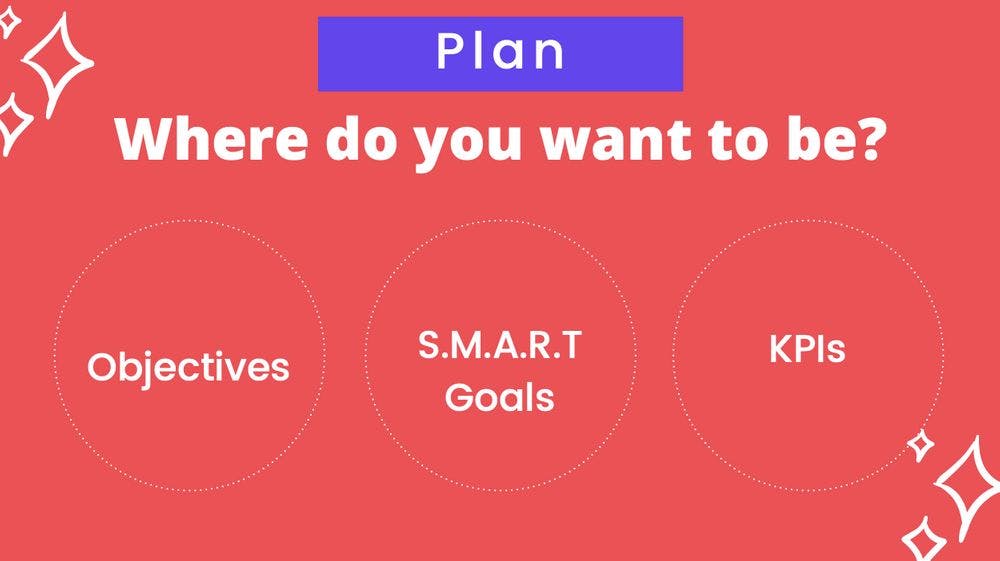
Examples of SMART goals could include:
Growing Brand Awareness
If your goal is brand awareness, then it’s important NOT to push too many sales. Instead, focus on content that emphasizes your brand personality or values first.
Example of a SMART goal: Gain 50% Increase in Organic Post Impressions on Instagram by 1st Nov. 2020.
KPIs to track:
- Increase Impressions
- Reach
- Followers
- Likes
- Saves
New Leads Acquisition
If you’re using Instagram to grow your email list, then create promotional content that entices people to sign up. How? You can host giveaways or offer a FREEBIE in exchange for their email.
Example of a SMART goal: 5% Increase in Click-Through Rates on Instagram URL by the end of 2020.
KPIs to track:
- Increase Web Traffic from Instagram
- Click-through rate on the URL link
- Sign-ups on a landing page
Build an Engaged Community
Example of a SMART goal: Gain 1,000 additional engaged Instagram followers by the end of 2020.
KPIs to track:
- Increase Engagement
- Followers
- Comments
- DMs
Step 3 - Lay Out Your Content Strategy
Determining your goals will help you decide what type of visuals are the most appropriate for your strategy:
- Professional Photos?
- Candid photos of yourself?
- Lifestyle photos showcasing your product?
- Influencer content?
- Videos?
- Memes?
and which of the 4 main content themes will you focus on:
- Entertain
- Inspire
- Educate
- Convert

If you're starting a new account you'll want to post a mix of educational content (tips, tutorials) and entertaining content (quiz, games, memes). Once you've established the know & trust relations with your followers, you can then create content centred around:
- Problems they are experiencing
- Information they’re seeking
- Branded content & promotions
While you focus on your content strategy, don't forget to build relations with your followers. A mistake many startups make on Instagram is that they don't follow people, and don't engage with people back.
Step 4 - Create a Posting Calendar
Once you've decided on your content strategy it's time to put it all together and have one final look at your Instagram marketing plan.
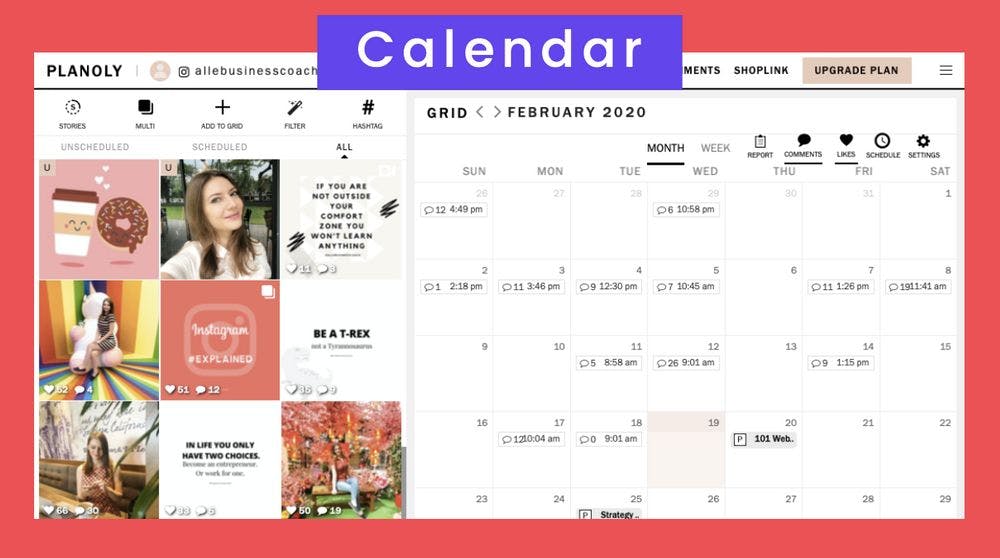
Create a monthly posting calendar that includes the following:
- Instagram Content (Images, Videos, etc.)
- Captions for each post
- A set of 15-30 Hashtags for each post
- Highlight any upcoming promotional campaigns so you can start creating awareness in due time
- Posting frequency (eg. 1 - 3 times/day)
- Best times to post for engagement
Once you're happy with the calendar, you can share it with your team so they're all briefed on what's coming.
Step 5 - Gear up with the right tools
Having the right for your business can fire-up your Instagram Marketing Strategy and help you achieve your goals. Here are our top pics for tools to help you achieve your goals & monitor progress:
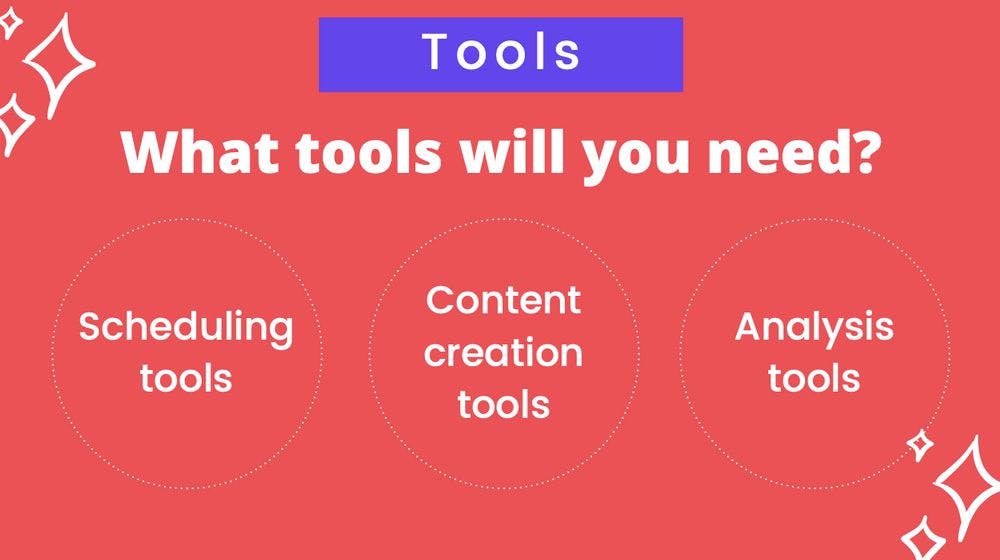
1. Scheduling tools
There are plenty of free options to choose from when it comes to scheduling tools. If you are new to Instagram a good place to start is Planoly. But if you're looking for an integrated platform that allows you to schedule content across platforms and track your performance, you'll love Later or Buffer.
2. Content creation tools
Here are some popular tools to help you create visual content for Instagram:
- Canva - for creating branded images, quotes & infographics
- Lightroom - for adding a branded filter to your photos
- InShot - for editing IGTV videos & Instagram Stories
- Magistro - for creating trailers & promo videos perfect for your feed
- Giphy Cam - for creating your branded memes
3. Analysis tools
No matter which types of content you choose to create, it’s crucial to track the performance of your content over time. This allows you to see which posts are helping you achieve your goals and which aren't. A tool like ShareMyInsights will help you keep track of your Instagram Marketing goals and KPIs including:
- Followers growth
- Top engaged posts
- Top commented post
- Top hashtags for growth
Heres' our full list of Instagram tools.
And these are the 5 steps you need to build your Instagram marketing strategy like a professional.
What does your Instagram strategy look like? Which areas would you need to improve?
